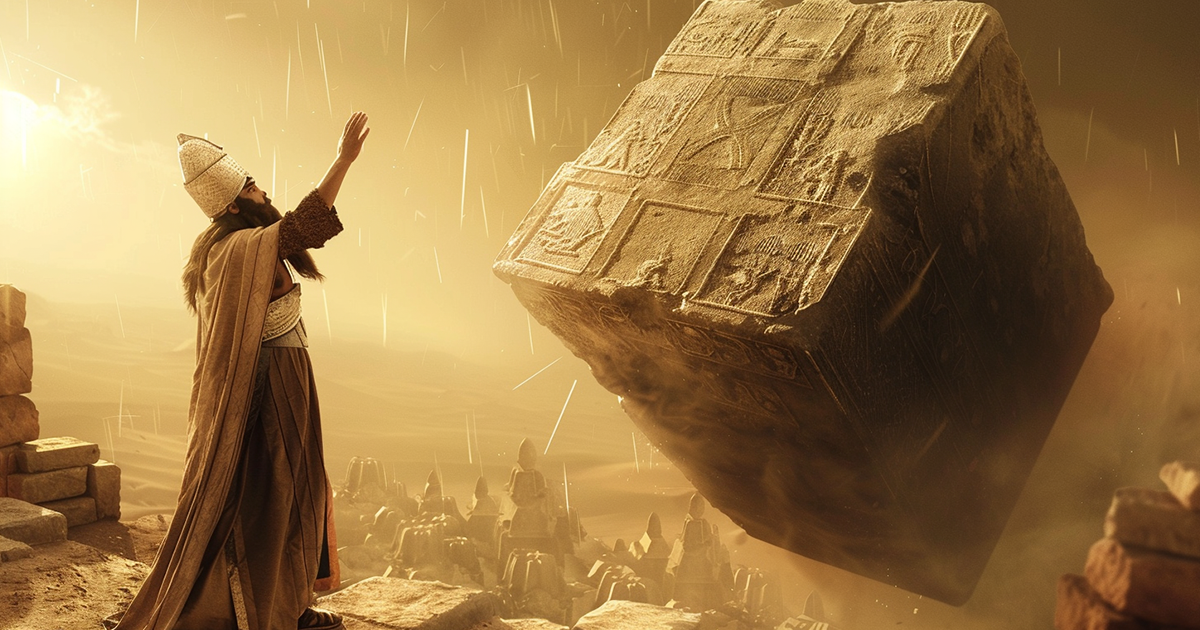Amidst the era of contemporary wonders, the remarkable structures built by our forebears serve as striking evidence of human creativity. From the grand pyramids of Giza to the enigmatic Stonehenge, these edifices have long perplexed researchers and scholars alike. The question lingers: How did ancient societies, devoid of our modern machinery, handle the task of lifting and relocating immense stone blocks with such precision?
A myriad of theories exist, ranging from traditional methods involving sheer strength and manual labor to more speculative notions involving extraterrestrial intervention. Within this array of hypotheses, a captivating proposal emerges – the notion of acoustic levitation.
Across various regions, remnants of past civilizations showcase architectural marvels that challenge logical comprehension. For instance, at the Temple of Jupiter in Lebanon, three monolithic stones, each weighing approximately 1,000 tons, serve as a testament to ancient craftsmanship. Additionally, the intricately designed stone blocks of Puma Punku in Bolivia, weighing roughly 100 tons each, leave contemporary observers in awe of their construction.
To grasp the magnitude of the challenge, consider the constraints of modern machinery. While a present-day loader can raise boulders weighing up to 22 tons, the stones utilized in ancient constructions far surpass these capabilities. Thus, the query arises: How did our predecessors manage to transport stones weighing over 50 tons without technological aid?

Common scientific perspectives propose theories involving human labor, ropes, and innovation. Nevertheless, these explanations often fail to address the sheer scale and meticulousness of ancient constructions. Might there be a missing element to this historic puzzle, one intertwined with the use of sound?
Ancient texts and folklore suggest the potential utilization of acoustic levitation by past civilizations. Accounts of levitating stones at sites such as Stonehenge and the Great Pyramid of Giza have sparked contemplation regarding the influence of sound in ancient engineering.
Although the concept of levitation may appear fantastical, there exists scientific rationale behind it. As Arthur C. Clarke famously stated, “Any sufficiently advanced technology is indistinguishable from magic.” This notion becomes particularly compelling when considering the acoustic properties of structures like the Great Pyramid, which amplify sound at specific frequencies.
Beyond the pyramids, other ancient wonders like Nan Madol in Micronesia and the Florida Coral Castle present further enigmas. Travelers’ anecdotal reports of acoustic levitation in the Far East, alongside contemporary experiments demonstrating the manipulation of sound waves to levitate objects, imply the potentiality of ancient civilizations harnessing akin techniques.
While traditional archaeology often disregards alternative theories as pseudo-science, it is imperative to approach these mysteries with an open mindset. History is abundant with instances of groundbreaking concepts initially met with skepticism, only to later be accepted as truths.
As modern science continuously pushes the boundaries of what is achievable, we may soon uncover the secrets behind ancient construction methodologies. Whether through sound manipulation or other inventive strategies, the enigma of colossal stone transportation could soon be unraveled.
In the pursuit of deciphering the enigmas of our past, one certainty remains: the resourcefulness of our ancient predecessors continues to evoke admiration and marvel to this day. While delving into the corridors of history, let us remain receptive to the idea that our ancestors might have possessed a technological sophistication surpassing our present comprehension. For in the quest for truth, all possibilities remain open.
